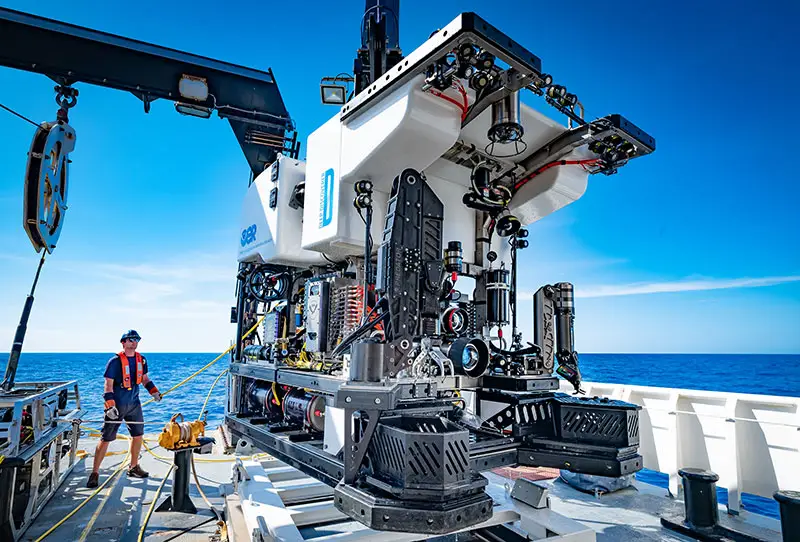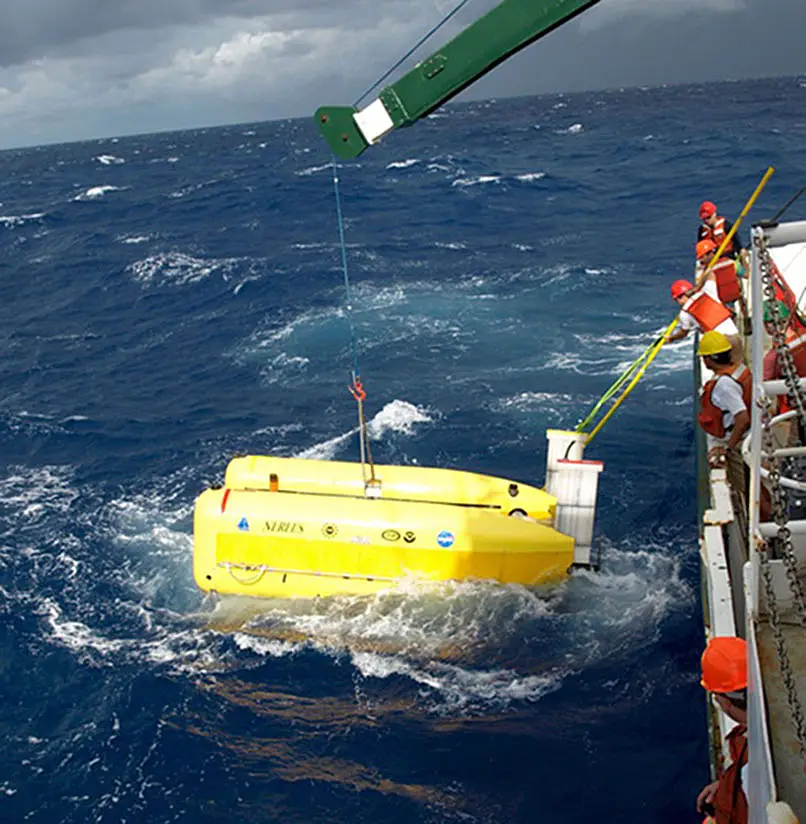Remotely operated vehicles (ROV) are widely used throughout the world in various ways. According to MarketsAndMarkets, “The global unmanned underwater vehicles market size is projected to grow from USD 2.0 billion in 2020 to USD 4.4 billion by 2025”. No matter if you use your drone professionally or as a hobby, discovering the depth any kind of ROV is capable of going can be an important factor.
So how deep can underwater drones go?
Recreational underwater ROVs can on average reach depths of between 10m-150m (33ft-492ft). Professional underwater ROVs can reach depths of between 300m-6,000m (984ft-19,685ft). An underwater drone’s maximum depth is influenced by many factors such as the way it was built or whether it’s wireless or tethered.
What Is An Underwater Drone?
Underwater drones are also know as remotely operated underwater vehicles (ROUV) but are most commonly referred to as ROVs. In essence, an underwater drone is essentially a submarine without a crew on board.
Underwater drones are either connected and controlled through a tether or controlled wirelessly. They can come in many different shapes and sizes and can go to various different depths depending on how they’re built.
The more expensive and professional ROVs may be connected via an ‘umbilical cord’ which is much stronger if the drone is being used in rougher conditions for example.
The tether cord is controlled by a tether management system (TMS) which controls the lengthening and shortening of the tether.
Autonomous underwater vehicles (AUV) are underwater drones that do not even need human intervention and don’t use any kind of tether. These autonomous drones use on-board sensors and computers to function.
These kinds of drones are commonly found being used in industries such as the oil and energy industries, the shipping industry and the fishing industry.
What Impacts How Deep A ROV Can Go?
Different drones are designed and built in different ways and each may be built to withstand different pressures which will determine how deep an underwater drone can go.
The materials used for the underwater drone, the length and strength of it’s tether, the underwater conditions and the battery capacity all impact how deep a ROV can go.
The deeper you go underwater, the stronger the pressure. Using suitable materials for your drone that can withstand such pressures is a given.
The overall weight of the drone is also important to take note of. Heavier drones are usually heftier and are more suitable for deeper dives.
It should be obvious that having a tether that’s too short will reduce your ROV’s capability to go deeper.
If you experience rough conditions underwater, the strength of the tether will also play a major factor.
The tether needs to be capable of providing enough power to the ROV and needs to be strong enough not to break while operating the drone to prevent you from losing your ROV.
Knowing the area you are putting your drone in should be someone you have studied and know, especially when going on the deeper expeditions. Underwater currents can get very strong, especially when there’s bad weather.
This can pose a problem as it can overpower your ROV’s thrusters and worst case it can break the tether completely. It may also be pushed into objects underwater which could damage the drone.
Finally, the battery capacity of the ROV is the final thing that may impact how deep it can go. Having a bigger battery means you have more time to go deeper and still safely resurface.
How Deep Can Recreational ROVs GO?
There are many factors that will influence how deep a recreational/hobby underwater drone will go like the factors mentioned above.
The primary factor with a tethered underwater drone that impacts how deep it can go is how long and strong the tether is. The primary factor that influences how deep a wireless underwater drone can go is the range the controller can reach the drone.
The depth a hobby ROV can go ranges from 10m to 150m deep (33ft-492ft). ROVs for recreational users are not built for long and deep expeditions as the average hobbyist is most likely not going to want to go that deep.
Having a wireless ROV will further limit it’s capabilities but will increase the ease of use of the underwater drone.
An example of a consumer underwater drone that’s capable of going 15m (49ft) deep is a drone called ‘Chasing Dory’ created by Chasing.
An example of a consumer underwater drone that’s capable of going 150m (492ft) deep is a drone called the ‘Titan’ or ‘T1’ created by Geneinno.
How Deep Can Professional ROVs Go?
Professional ROVs are much more capable than recreational ROVs as they are used to going much deeper in most cases. They are built to be more durable and stronger, but require more skill to operate.

Professional ROVs can reach depths of between 300m-6,000m (984ft-19,685ft). These numbers are so far apart from each other due to the sheer amount of uses these ROVs have in various industries.
Each industry and task will require different underwater drones with different specifications.
Working class underwater drones (Professional ROVs) are built to carry out various tasks such as ocean floor exploration and inspections of things like a vessel’s hull.
An example of a professional underwater drone that can reach 300m (984ft) would be the ROV called ‘Revolution’ created by Deep Trekker.
An example of a professional underwater drone that can reach 6,000m (19,685ft) would be the ROV called ‘Deep Discoverer’ created by Global Foundation for Ocean Exploration (GFOE)
What Is The Deepest A ROV has gone?
The ‘Nereus’ ROV was created by the Woods Hole Oceanographic Institution (WHOI).

This drone was specifically built to reach incredible depths in the ocean. In this case, we are specifically talking about Challenger Deep which is the deepest surveyed point in the global ocean.
Nereus was built to be capable of operating at 11,000m (36,000ft) and was used as a research vehicle.
In May of 2009 the ROV started it’s descent into the Marianna Trench. It arrived at the bottom on May 31 2009 reaching a depth of 10,902m (35,768ft).
At the bottom of the trench, the water column above exerts a pressure of 1,086 bars (15,750 psi), more than 1,071 times the standard atmospheric pressure at sea level. At this pressure, the density of water is increased by 4.96%. The temperature at the bottom is 1 to 4 °C (34 to 39 °F).
Mariana Trench – Wikipedia
This drone was capable of withstanding incredible amounts of pressure and sadly it met it’s demise on the 10th of May 2014 while exploring the Kermadec Trench at a depth of 9,900m (32,500ft).
The drone caved in from the extreme amount of pressure (16,000psi) and only pieces of the ROV were found at the surface of the dive site.
Conclusion
Many different ROVs were built with different uses and therefore have different capabilities. As time passes, new technology is being developed for underwater drones allowing them to continue to improve in quality.
These newer drones are becoming more and more capable of reaching incredible depths and opening up many new possibilities in research and science of our oceans.
We hope you enjoyed this fascinating post on how deep underwater drones can go.
Do you think ROVs will benefit how we learn about our oceans?
